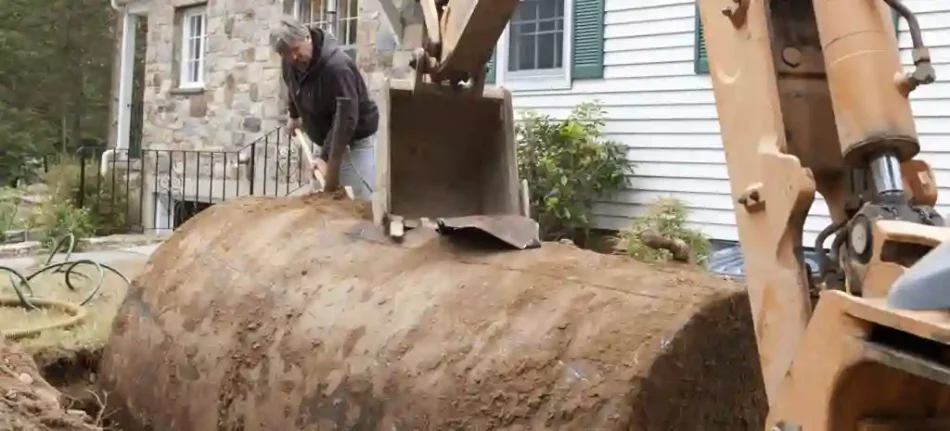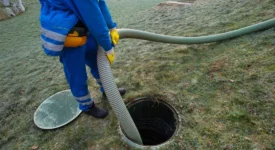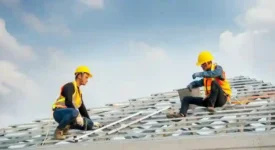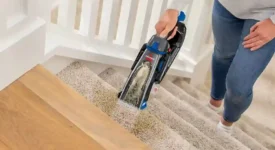Beneath the tranquility of many homes lies a hidden hazard that often goes unnoticed – buried oil tanks. While these tanks may have faithfully stored fuel over the years, they can pose serious dangers as they age. “Hidden Hazards: Unveiling the Dangers of Buried Oil Tanks” sheds light on the potential risks associated with aging tanks, offering homeowners insight into the importance of proactive management and, when necessary, the safe removal of these buried time bombs.
The Silent Threat: Recognizing the Presence of Buried Oil Tanks
The silent threat of buried oil tanks often begins with their inconspicuous presence. Homeowners, unaware of the potential hazards, may overlook signs of trouble such as rust stains, strange odors, or unexplained spikes in fuel consumption. Recognizing the silent threat is the first step in unveiling the dangers these buried relics may pose to property and environment.
Structural Degradation: The Unseen Menace Below the Surface
As oil tanks age, structural degradation becomes an unseen menace below the surface. Corrosion, a natural consequence of time, weakens the tank walls, making them susceptible to leaks. The danger lies not only in potential fuel spills but also in the structural instability of the tank itself, which could lead to collapses or breaches that pose serious risks to the property.
Environmental Time Bombs: Soil and Groundwater Contamination
Buried oil tanks have the potential to become environmental time bombs. Over time, leaks may occur, releasing oil into the surrounding soil and groundwater. This contamination poses a severe threat to the environment, impacting ecosystems, local water sources, and even the health of nearby residents. Unveiling these hidden environmental hazards is crucial for responsible property management.
Regulatory Obligations: The Legal Consequences of Ignorance
Homeowners unaware of the dangers of buried oil tanks may inadvertently find themselves entangled in regulatory obligations. Ignorance of local regulations regarding buried tanks can lead to legal consequences, including fines and penalties. Unveiling the regulatory landscape is essential, ensuring that homeowners comply with legal requirements and take proactive steps to address potential hazards.
Health Concerns: Airborne Contaminants and Respiratory Risks
As buried oil tanks deteriorate, they can release airborne contaminants that pose health risks to residents. Vapor intrusion, where volatile compounds seep into indoor air, can lead to respiratory issues and other health concerns. Unveiling these potential health hazards underscores the importance of proactive measures, including tank removal when necessary, to safeguard the well-being of those living on the property.
Property Value Erosion: The Economic Impact of Buried Hazards
The dangers of buried oil tanks extend beyond immediate risks, impacting the economic landscape of the property. As hidden hazards are unveiled, property values may erode due to the stigma associated with potential environmental and structural risks. Recognizing the economic impact underscores the importance of proactive management, including tank removal, to preserve and enhance property values.
Proactive Inspection: The First Line of Defense
In unveiling the dangers of buried oil tanks, proactive inspection becomes the first line of defense. Regular assessments by homeowners and professional inspectors can reveal signs of structural degradation or leaks. Identifying potential hazards early allows for strategic decision-making, whether through remediation or, when necessary, the safe removal of the tank.
Environmental Testing: Assessing the Extent of Contamination
Environmental testing serves as a vital tool in unveiling the extent of contamination caused by buried oil tanks. Soil and groundwater assessments provide critical insights into potential environmental hazards, guiding homeowners in determining the most effective remediation or removal strategies. Unveiling the true environmental impact is essential for responsible and informed decision-making.
Legal Compliance: Navigating the Regulatory Landscape
Homeowners must navigate the regulatory landscape to unveil the legal obligations associated with buried oil tanks. This involves researching local regulations, securing necessary permits, and ensuring compliance with environmental and safety standards. Unveiling the legal obligations is crucial to avoiding potential legal consequences and fostering a responsible approach to property management.
Remediation or Removal: Strategic Decision-Making
When the dangers of buried oil tanks are unveiled, strategic decision-making becomes paramount. Depending on the extent of contamination and structural degradation, homeowners must decide whether remediation or removal is the most appropriate course of action. Unveiling the most suitable approach ensures the effective mitigation of risks and the protection of property and environment.
Conclusion:
Hidden hazards lie beneath the surface in the form of buried oil tanks, posing risks to property, environment, and health. Unveiling these dangers through proactive inspection, environmental testing, and legal compliance is essential for responsible property management. Recognizing the economic impact and health concerns associated with buried hazards underscores the importance of strategic decision-making, whether through remediation or safe removal. Ultimately, unveiling the dangers of buried oil tanks empowers homeowners to take informed and proactive measures to protect their properties and the well-being of those who inhabit them.








